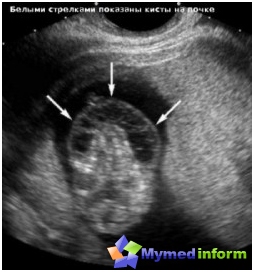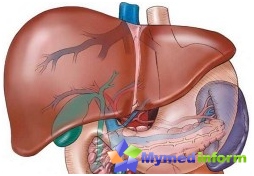In case of polycystic kidney, it is necessary to closely monitor its blood pressure and, if necessary, to carry out appropriate treatment. Otherwise, the risk of occupation of the kidney impairment increases, and this may increase the likelihood of developing heart disease. About half of patients whose age exceeds 60 years, suffer renal failure. At an older age, the percentage of patients with this complication even more. Moreover, if the patient has a frequent increase in blood pressure, the risk of renal failure rises almost twice.
Description of the disease

This disease can weaken the ability of the kidney to carry out the slags, and because of this, poisonous substances will accumulate in the body. If cysts increase in size, then damage to the adjacent fabric sites, which were not previously changed. It can provoke an increase in blood pressure.
In some cases, the disease goes into the thermal stage, because of which the patient is required to constantly carry out blood purification. To save the patient's life, you can also transplant the kidney.
Our site notes that in women, polycystic can give complications during pregnancy. Such women are often as a state of health can have only one child.
In patients with polycystic kidney with age, the risk of a cyst in the liver only rises. Moreover, women cysts are able to develop at an earlier age, and besides, they have a very large size. The risk of such pathology is even higher in women who have ever hatched the child. This will be explained by the fact that the effect of female hormones contributes to the growth of such neoplasms.
Approximately 4-10% there are early aneurysms of brain vessels that can cause hemorrhage.
Polycystyosis sometimes leads to the development of some pathologies of the heart valves, which is why ? patients suffer from a swamp of mitral valve.
Causes

In the early stages, the disease does not exist in any way. The first obvious symptoms begin to appear only at the age of 46-70 years, but sometimes their appearance is observed in childhood. There are cases of disease development in children even before birth inside the womb. Such pathologies lead almost always to abortion or stillbirth. If the polycystosis passed inheritance, he always appears very pronounced.
Among all the symptoms of the disease, one of the most obvious is a bilateral increase in kidneys, which can be detected by palpation of the front abdominal wall. In addition, the disease appears pain in the area of the lower back or the reflecting pain, which usually arises due to the stretching of the kidney tissues. Such a stretching occurs due to the education in the kidneys of a set of cyst.
Another disease is characterized by the presence of hematuria, which is a state in which due to bleeding inside of extensive formations, blood detected in the urine. Hematuria can be both powerful and insignificant.
Explicit symptoms of the disease can also be attributed to kidney stones. This pathology usually arises due to violations metabolism In the tissues of organs. In addition, this contributes to the presence of obstacles that interfere with the normal urine outflow.
In case of kidney polycystrosis, an increased blood pressure is often noted, which is due to the fact that there is pressure in the kidneys. It is usually adjusted within this organ with special synthesis. In case of violation of the blood supply to the kidneys, these substances are produced in more quantities, which causes blood pressure lifting. A person who has blood pressure is increasing complaining headache And heart pain.
Often with polycystic disease in patients, the presence of infections in the urogenital system is determined. Infection usually appears due to the violation of urodynamics, which leads to the fact that harmful microorganisms over time rise above by urinary tracts and amazed in the future the entire renal system. As a result, in the tissues there is a rapid development of purulent processes.
Chronic renal failure refers to obvious symptoms of kidney polycystic. This is considered the most severe complication of the course of the disease. Often it leads to death. In renal failure, the tissue is gradually filled with a variety of cysts, which leads to the cessation of excretion from the body of the exchange. Because of this, there is no inxication of the entire body and the defeat of the internal organs. As mentioned above, such patients need kidney transplant or constant blood purification by hemodialysis.
Diagnostics

During the diagnosis, first of all, a survey is conducted to obtain the necessary data. Interviewed as the patient himself and his relatives to find out if there were previous cases of the development of this disease from someone from family members. It is important to determine how long the ailment lasts. After that, the patient is appointed uli urinary system and, if necessary, other internal organs. In addition, the patient is shown to carry out computer tomography and urography using contrast. It is also necessary to give up blood to biochemistry and urine analysis is taken. Based on the data obtained prescribed treatment.
Treatment of polycystosis
If the treatment of kidney polycystosis to start timely, that is, all the chances that it will be successful. During pains, painkillers and anti-inflammatory drugs are prescribed. If any infection has joined the disease, antibacterial drugs are accepted. At elevated pressure, antihypertensive drugs are selected.
If the patient has large cysts who threaten his life, they are removed surgically. The most extreme treatment is the transplant of donor kidney.
In the treatment of kidney polycystosis, a special diet also has important importance. For example, it is necessary to reduce the consumption of cook salt, limit the use of products rich in proteins, to exclude from its diet products with a high glycemic index.









